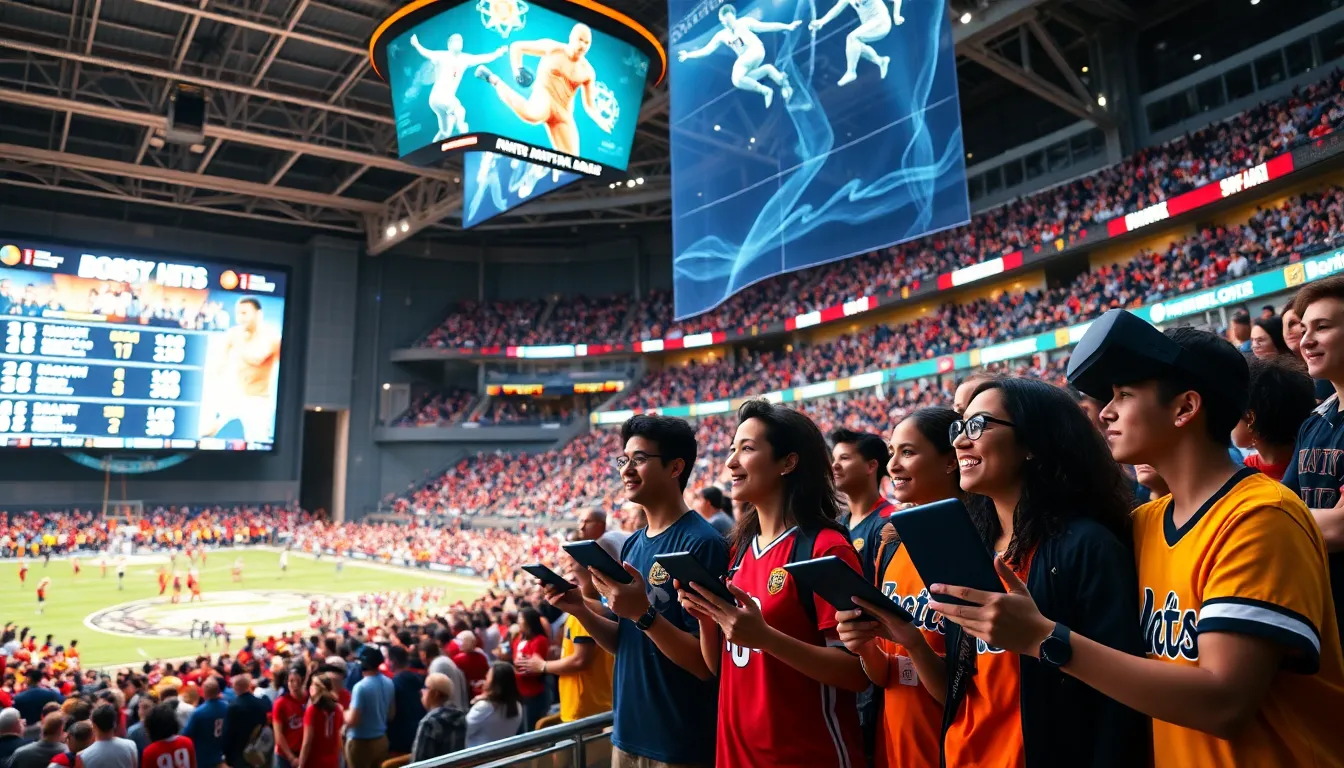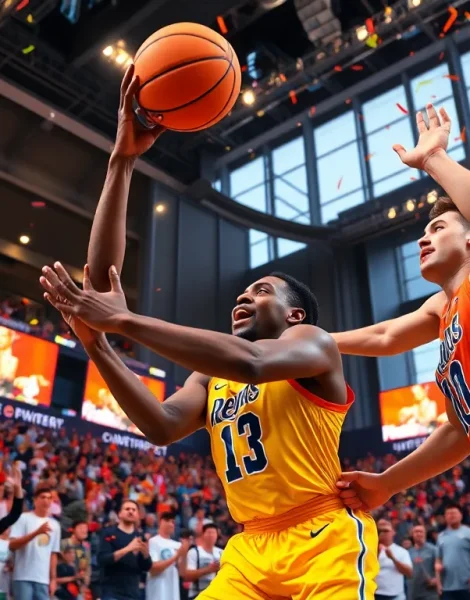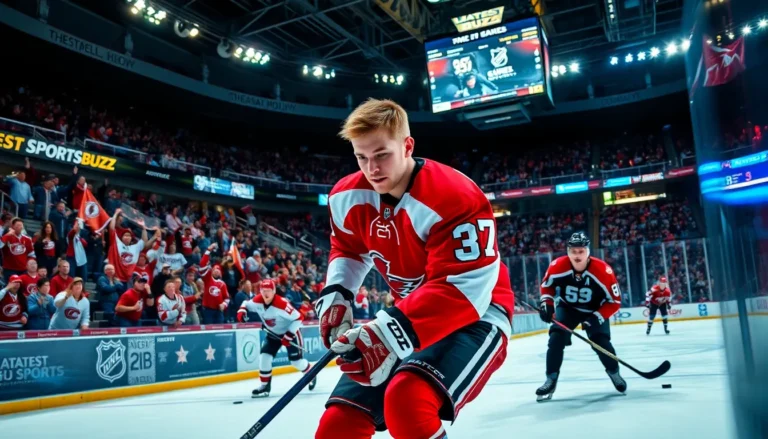In the ever-evolving landscape of sports, the emergence of rate competitions, particularly plateau deals, is capturing the attention of stakeholders and enthusiasts alike. This innovative approach allows organizations to structure competitions in ways that regulate expenses and enhance participation. As various sectors within the sports industry adapt to these changes, understanding the implications and mechanics of rate competitions becomes crucial. This article delves into what these competitions entail and the significance of plateau deals, shedding light on case studies and stakeholder dynamics shaping the future of sports.
Table of Contents
ToggleUnderstanding the Current Landscape of Sports Competitions

The sports industry has witnessed substantial changes in recent years, driven by technological advancements, shifting viewer preferences, and a heightened emphasis on viewer engagement. Traditional formats of sports competitions, which often depended heavily on ticket sales and merchandise, are gradually being supplemented by alternative revenue models.
Organizations now explore diverse formats, such as digital streaming and virtual competitions, responding to the global shift towards online engagement. As these changes unfold, the concept of rate competitions emerges as a progressive strategy aimed at maximizing benefits for all stakeholders involved.
Rate Competitions: What Are They?
Rate competitions represent an innovative framework within the sports industry where entities compete to secure the best financial outcomes without compromising the quality of events. Essentially, this model helps organizations manage costs while simultaneously trying to outdo competitors via strategic planning and targeted marketing.
- Structure: Rate competitions typically include a mix of vendor sponsorships, ticket pricing strategies, and digital engagement metrics. The success of these events hinges on how well organizations can introduce cost-effective measures while enhancing fan interaction.
- Examples: An iconic example is the shift seen in eSports, where tournaments attract significant sponsorship and audience participation, often adapting ticket prices based on demand and competition structure.
The effectiveness of such competitions lies in their adaptability, allowing organizations to pivot strategies quickly in response to market demands.
The Impact of Plateau Deals on Sports Industry
Plateau deals are agreements that outline fixed compensation levels for stakeholders in a sports event or competition, even though fluctuations in performance metrics or participation numbers. This model mitigates risks associated with variable income streams commonly found in sports.
- Financial Stability: Plateau deals create a stable financial environment, ensuring that all stakeholders, from teams to sponsors, receive guaranteed payments. This predictability can lead to improved budgeting and investment decisions, fostering long-term planning.
- Market Responses: Given the uncertain nature of viewership and participation in live events, plateau deals are increasingly favorable to minimize potential losses during downturns. Many organizations are now recognizing the necessity of embracing this model to secure revenue streams amid unpredictable market conditions.
Case Studies of Recent Plateau Deals
Several notable plateau deals illustrate the potential and effectiveness of this model across various sports:
- The NBA’s Local Broadcast Agreements: Recent negotiations in the National Basketball Association (NBA) have focused on local broadcast rights, with teams entering plateau deals with networks. These agreements guarantee a specific revenue share, irrespective of live game viewership.
- E-Sports Tournaments: The evolution of eSports is another compelling case. Companies hosting tournaments often enter plateau agreements with participants, ensuring they receive a baseline payment while prize incentives promote high performance.
- International Sports Federations: Organizations like FIFA have similarly utilized plateau deals to stabilize income streams for smaller federations, ensuring they are not adversely affected by larger federations’ financial dynamics. This equitable distribution allows for growth and competitiveness at all levels.
The Role of Stakeholders in Shaping the Future
Stakeholders in the sports industry, ranging from athletes and sponsors to fans and media, play a pivotal role in the adoption and evolution of plateau deals. Their input and engagement can substantially impact the success and acceptance of these arrangements.
- Athletes: Professional athletes increasingly advocate for equitable compensation structures, making their perspectives vital in forming plateau deals. Their acceptance influences sponsorship decisions and media rights negotiations.
- Sponsors: Corporations investing in sports view stability and predictability through plateau deals as attractive options. Accordingly, they are inclined to commit long-term resources when they perceive reduced risks.
- Fans: Engaging with fans through competitive and entertaining offerings is fundamental. Their preferences can drive innovations in the structuring of competitions, including how plateau deals are framed.
Potential Benefits and Drawbacks of Plateau Deals
While plateau deals arrive with notable advantages, they are not without potential drawbacks:
- Benefits:
- Revenue Stability: Organizations enjoy steady revenue, allowing for improved financial forecasting.
- Enhanced Planning: The predictability of income allows for more effective long-term strategies.
- Increased Participation: Fixed income structures can encourage more participants to sign on, promoting a more competitive environment.
- Drawbacks:
- Limited Incentives: Fixed payments might disincentivize peak performance, as financial rewards are not contingent on performance metrics.
- Market Misalignment: In unique events experiencing significant demand, plateau deals may underplay the profits achievable from a more dynamic pricing strategy.
At the core of these deals lies the fundamental balance between stability and motivation, necessary for fostering growth in the competitive landscape.
Conclusion
The concept of rate competitions and plateau deals is undeniably reshaping the landscape of the sports industry. As organizations strive for enhanced financial stability while maintaining competitiveness, these new models provide frameworks adaptable to changing market conditions. The integration of such systems relies heavily on the engagement of all stakeholders, from athletes to fans. While benefits such as predictable revenues are clear, ongoing analysis of potential drawbacks is essential to continually refine these competitive structures.
A strategic approach to rate competitions can lead to not just a favorable financial environment but also an enhanced sporting experience for fans and participants alike.









